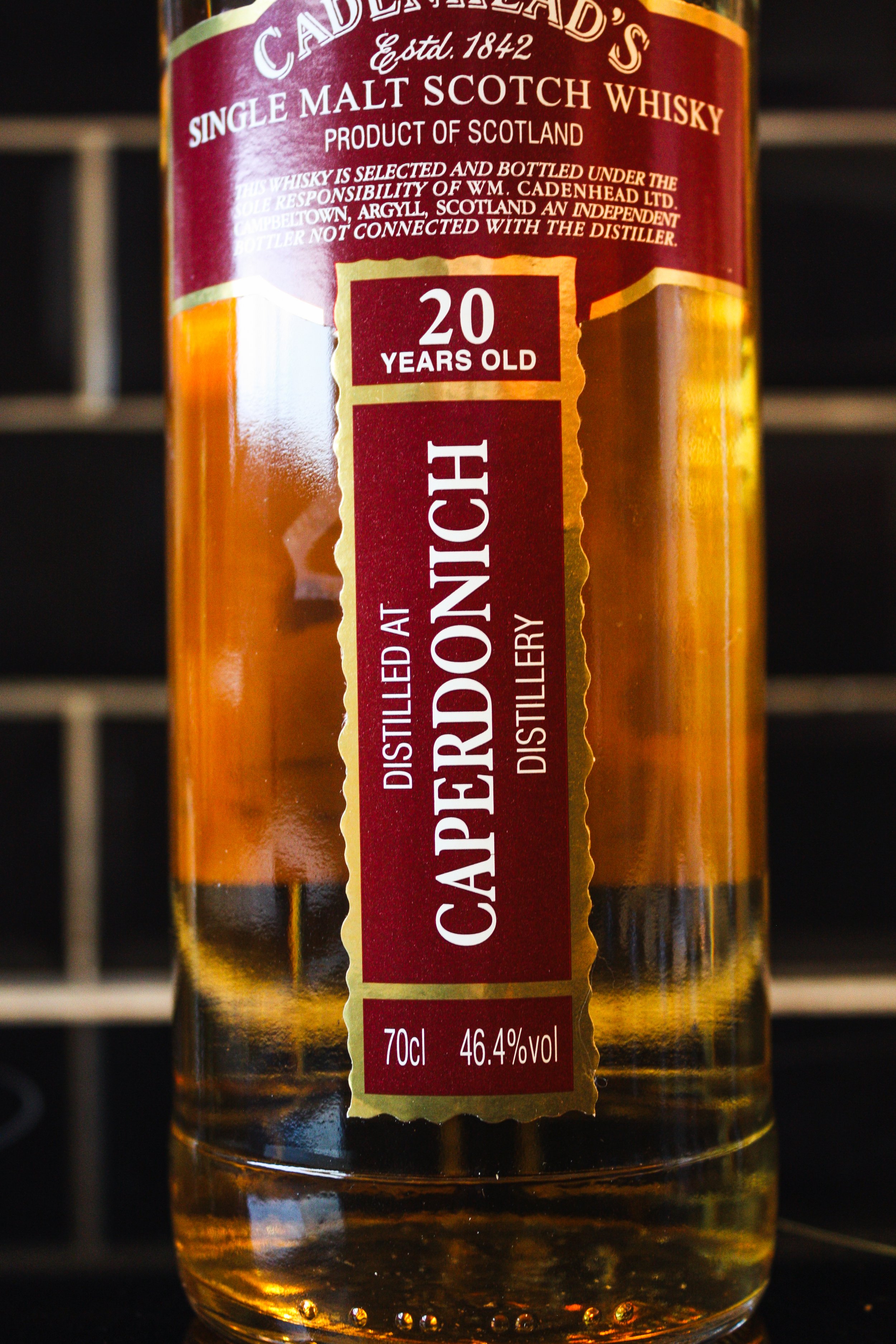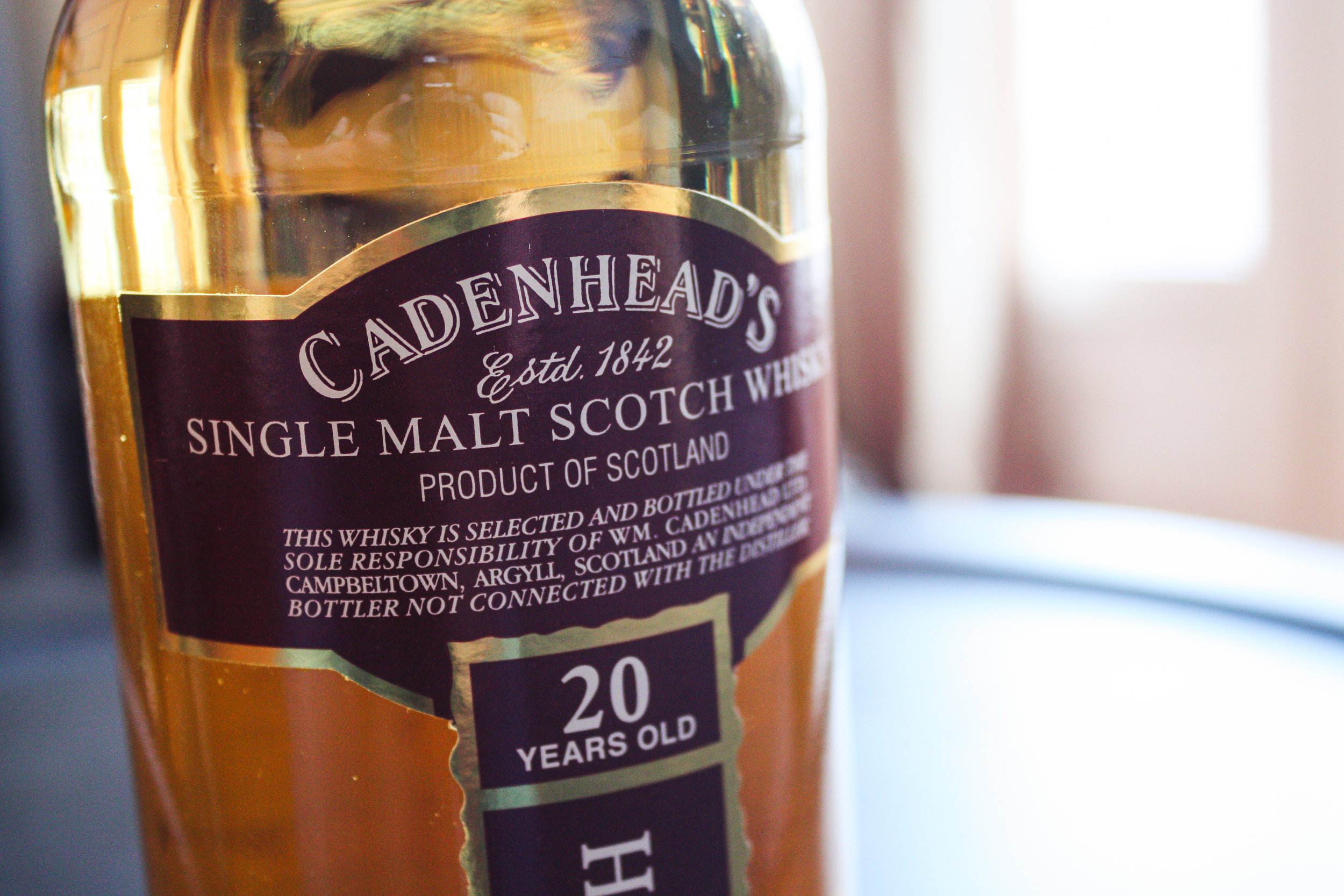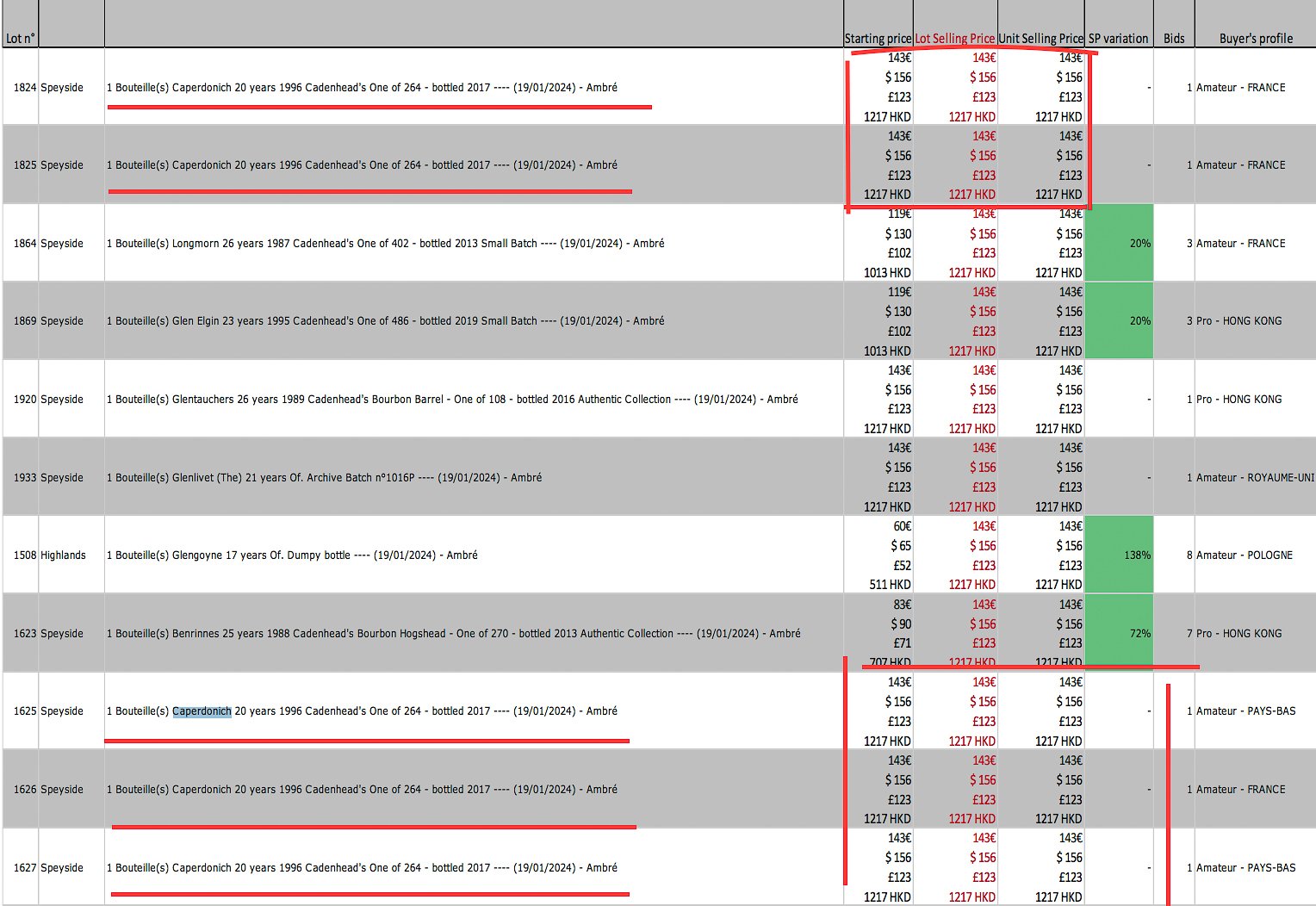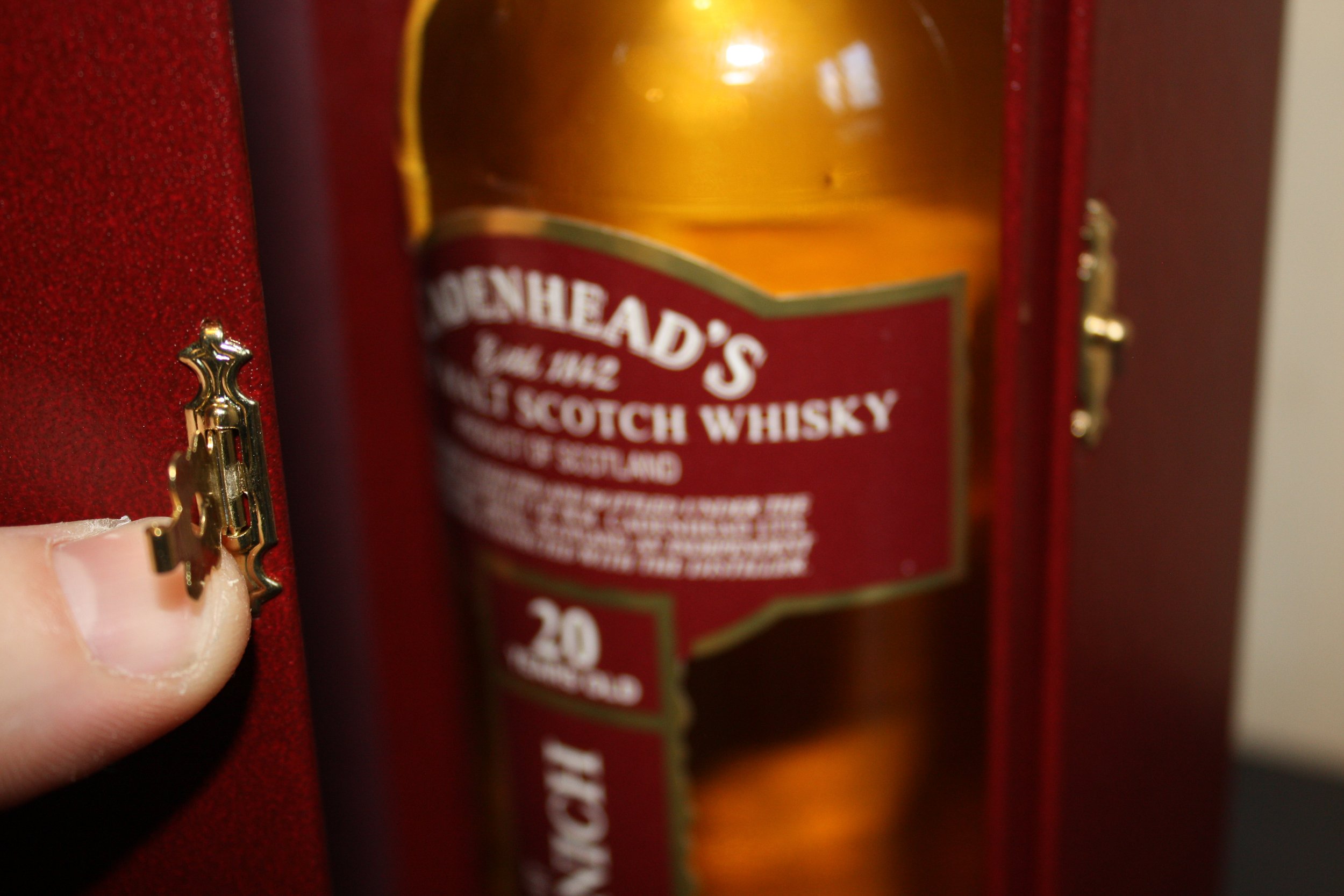Cadenhead’s Caperdonich 20yo
1996 Closed Distilleries Series | 46.4% ABV
Score: 8/10
Something special.
TL;DR
Numbers aren’t important. Except when they are
What were you doing in 1996?
Don’t freak out, I’m not a cop and I’ve not discovered your darkest secret (backstreet boys fan eh?).
But seriously, what were you doing when this was distilled? As a retailer, this is a question I’ll sometimes ask my customers when they’re surprised by the price of a bottle.
Don’t get me wrong, it’s not a way of justifying the abnormal - to say the least - price increases we have seen over the past few years for higher age statements and luxury-oriented whiskies which in fact, I mostly don’t stock. Rather, sometimes it’s a question that I find will put things in perspective for people not as invested as we are.
For example, people will think that 50 or 60€ is expensive for say, a 12 year old whisky. I’m not saying it isn’t, but asking “Well, do you remember what you were doing 12 years ago?” may help this person realise that it might be expensive, but it is probably a fair price. Let’s take another example; I recently ordered two Armagnac bottles for the shop, a 1994 and a 1974. We respectively sell those bottles for 150 and 200€. This is a lot of money, but when you factor in the fact that they originate from a great, small-scale producer, are bottled at high strength and contain liquid that is either 30 or 50 years old, is it really too much money? I don’t think so.
However, if whisky has taught us anything in the last five to ten years, it’s that numbers don’t really mean anything when referring to the age of the liquid. I recently tasted a wonderful four year old Croftengea from Claxton whiskies. If you’re just looking at the quality of the liquid in the bottle, distillers and bottlers now know ways to put out great whiskies at ages that twenty years ago would have been laughable.
Look at Ardnamurchan, Lagg, Lochlea, Torabhaig, at world whiskies, like Waterford and Dingle in Ireland, Piccadilly in India, or even Celtic whisky distillery and Distillerie du Vercors in my french-speaking, cheese-eating, kings head-cutting neck of the woods. It is truly established that age is not important anymore. Or, if I’m being a bit more nuanced and not as provocative, not as important as it used to be.
But still, there is an aura that surrounds older whiskies, they evoke days gone by, and sometimes allow us to contemplate times that have passed and reflect upon. Those bottles resonate with our mere existence, the time frame that was needed to produce them echoing long periods of our own lives.
Ultimately, we chose to attach importance to a number. After all, 20 or 30 years is nothing compared to the scale of human history or even geological times, and you could argue that there’s even something a bit self-centred in valuing certain whiskies more because they are as old as we are. But I think it’s healthy to remember that what you are drinking now is a screenshot of an era, encapsulated in liquid form in a 70cl bottle. I think it enhances the overall experience, elevating it beyond just, well, drinking.
This is even more true, I believe, when we are faced with whisky from a distillery that no longer exists. Whisky from the likes of Glen Albyn, Glen Mhor, Imperial or indeed Caperdonich are becoming increasingly rare and pricey, both on the shelves and on secondary. Elixir distillers for example recently put out a 1995 Imperial, at an eye watering £850 RRP. The fact that the majority of us cannot afford these whiskies, or sometimes only barely as a dram in a bar, makes them special.
You might tell me : “But Ainsley, if these distilleries were closed it’s probably because the whisky they made wasn’t of sufficient quality!” but you won’t because you know better. Distilleries were mothballed during the Whisky Loch of the eighties and nineties to reduce cost; because of a lack of demand. Time and independent bottlers have long proven that many of these beloved distilleries were in fact very good, Brora, Rosebank, or Port Ellen being great examples of that. Many reviews on whiskyfun by Serge and Angus are dithyrambic about these old gems, and his holiness Michael Jackson himself was a Rosebank fanboy.
It’s us, the enthusiasts, who have discovered the true potential of these liquids, not the accountants and shareholders of Diageo or Pernod Ricard. No wonder these distilleries have been or will be revived, now that these names have become synonymous with highly sought-after delicious liquid. I wonder, however, who will be able to buy the whisky?
I don’t know about you, but I certainly don’t expect the new Rosebank’s first release to be a simply packaged naturally presented, bourbon cask matured 3 year-old at £50. I hope I’m wrong though.
As someone who is relatively new to this wee hobby that we have, hidden distilleries and even simply high age statements from established, currently running distilleries have always made me feel bittersweet. I basically cannot afford any new release of whisky older than 18 years. Hell, I can barely afford 15 year-olds these days! But at the same time, I’ve had the chance to taste quite a few at various whisky shows and through my day job, and a lot of them have left a serious impression upon me. I still remember a Glen Garioch 31 years old and a Secret Speyside (Gl**f*rc**s) 55 years old tasted at the last whisky live in Paris which were gorgeous.
But every time I’m reminded, as I’m sure a lot of you are, that these are not made for me. That is, when they are released. Then, time passes and anything can happen.
You know what they say, whisky finds a way.
Review
Caperdonich 20yo, 1996 Cadenhead’s Closed Distilleries Series, 46.4% ABV
€143 paid. Sold-out. Occasionally on auction around €300-400
I bought this whisky at an auction in January this year. I’ve only bought whisky on the secondary market twice, both times from the same online auction house, and both quite recently.
I feel like you shouldn’t dabble in auctions if you don’t know whisky really well, as there are a lot of duds to be found. I personally usually select all the bottles I’m interested in, then I check reviews for them here on Dramface, or on Whiskyfun and Whiskybase. Also keep in mind auction fees and postage will increase the final price you’ll have to pay significantly. I recommend reading Broddy’s guide if you are interested in trying your luck there.
Anyway, I had been looking at auction sites, particularly Fine Spirits Auction, which is based around Paris so local to me, for a while, but I never pulled the trigger until last November. I guess I was slightly intimidated by the amount of whiskies on offer, and the senseless prices that people were willing to pay for some bottles while others were seemingly ignored by everyone. That and the fact that until recently, there were not that many interesting indie releases available. At most, only two or three bottles grabbed my attention at each sale.
Then, last November, suddenly, hundreds of Cadenhead’s bottlings appeared from the void. I heard that Cadenhead’s has ceased its activities with franchised shops in mainland Europe, but I also heard these shops mostly stayed open, albeit with a different name and selection. There was however a shop in Milan, and I cannot for the life of me find on the internet any information regarding it still being open. Since all the Cadenhead’s bottles I saw at auction had the Italian Customs seal on them, I assume it either closed or changed hands and they decided to get rid of the stock they had left. This is pure speculation, so if you have any more information than I do, I’d love to read it in the comments.
I bought six bottles in total, during two separate auctions, all Cadenhead’s Cask Strength bottlings. Expect some reviews soon.
One of them was this wee Caperdonich. As far as ghost distilleries go, Caperdonich, which was originally built as Glen Grant II, is kind of the runt of the litter. The fact that it closed fairly recently (2002, demolished 2010) probably explains the apparent lack of interest in this whisky, because, well, there’s still lots of it available. There isn’t the same sense of urgency as Brora or St Magdalene, of which stocks have almost been completely depleted by now and can instil the purest, most intense FOMO in some people (those with pockets deep enough anyway). Caperdonich bottlings usually command a premium of £300 to £700, which surely puts it out of reach, but it is not as bonkers as other cult distilleries.
Still, I fully expected I was going to be outmatched when I bid on it. The starting price was 120€, and that’s the bid I placed. It was valued by the auction house at around 250€ (roughly £210, before any fees), so I was damn sure I wasn’t getting it, as I didn’t want to engage in a useless contest with people richer than me. I still placed a bid, as it was a chance for me to finally own a whisky from a ghost distillery, with a very noble age statement, and, cherry on the cake, it was distilled during my birth year.
I was very surprised to see that I was indeed outbid, but on pretty much everything except this bottle! This might be another sign of the changing times we find ourselves in. There were in fact no less than five identical bottles of this available, and absolutely all of them were won by the first bidder, for the exact same price. The price with auction fees and delivery amounted to 143€, or roughly £123.
So yes, I bought a 20 year old whisky from a ghost distillery, cask strength (albeit fairly low), at auction, delivered to my door, for less than £130! This surely is a treat to myself and I won’t do it again every month, but for now, well, Ainsley is happy.
I did ask myself if there was any point in reviewing it though, since it was a very small outturn, pretty much all sold out, and it still commands a price a lot of you don’t want or simply can’t pay when it appears at auction. To be fair the main reason for reviewing it is I needed an excuse to pop the cork, as I generally have the patience of a labrador in a kitchen. But there are more noble reasons. First of all, this article might serve as an archive to someone seeking informations on this whisky in the future. A very unuseful, subjective archive, but an archive nonetheless.
More importantly though, this is for me a way of sharing this whisky with you, dear reader. I am not going to be able to pour each and everyone of you a dram off this bottle (although I might if we ever meet!), so writing down my humble tasting notes for this elusive whisky and publishing them here is my way of giving a little something back to this wonderful community.
So we dive in.
Score: 8/10
Something special.
TL;DR
Numbers aren’t important. Except when they are
Nose
Firstly, it’s not a peater (Caperdonich produced the occasional peated run). This is soft, delicate, slightly sweet: icing sugar, glazed doughnuts, sponge cake. The fruity aspect is mostly orange, in the form of marmalade and orange candies. A few drops of water bring more sweet fruits: orange, fresh apples, tinned pears, with a light glaze of floral honey. There’s also a slight waxy element to it now. Not Clynelish-like wax, but it’s there nonetheless. More candies appear, bubble gum, marshmallows. Little nutmeg to round it off. Beautiful nose.
Palate
This confirms to be a light and delicate spirit. The sweetness is there, but nothing about it is artificial, and it’s in check. Barley and icing sugar, with a very delicate texture. There’s also a feeling of an old dusty cupboard. A slight woodiness - a good one - appears only in the finish, prolonging it for quite a while, despite the lightness of the spirit. Just as the nose, water brings more fruits to the table, mainly white peaches this time, with a little dollop of the lemon cream my granny used to put on her famous lemon cake.
The Dregs
This is a beautifully put together malt. It is also quite shy at first, and it needs all your attention on top of a good 20-30 minutes in the glass to open up and reveal its secrets. Beautifully subtle. I’ve got nothing on my shelves that resembles this Caperdonich. This is truly a whisky that has been matured by time, not by the cask. It’s similar to an aged Sancerre or Alsatian Riesling in the wine world in this aspect.
On the neck pour, I was almost going for a 6/10 because of how shy it was, but with time and water tinkering this has revealed itself as a solid 8/10. I could even go up to nine, but the triple-digit price makes me think it should work a tiny bit harder, even though I think we can all agree I got a bargain.
Anyway, scoring is a bit pointless here, as this review isn’t really destined to guide you should you want to buy it. Let’s just enjoy the fact that such finds are still possible today. For now, this whisky is going back to its classy little box, and at the back of the cabinet, only to be reopened on special occasions, with special people.
If by any chance someone who used to work at Caperdonich ever reads these lines, well, thank you for helping in making this great whisky when I was only capable of producing saliva and unintelligible sounds, and be reassured, people are still drinking it. I realise now that I’m proof reading this, that this last sentence might make you feel old. I’m sorry about it. You’re not old, you’re wise.
Today’s musical accompaniment will be another classic, in the form of Nutshell, by Alice in Chains, a song present on their 1996 live album Unplugged. This album is the best of all the MTV unplugged sessions. I will die on this hill.
Last minute : At time of writing, there are three more bottles of this available on Fine Spirits Auction. Don’t forget to check the delivery and auction fees before you place a bid, especially if you’re not based in France. Auction ends on the 8th of March.
Score: 8/10
Tried this? Share your thoughts in the comments below. AF
-
Dramface is free.
Its fierce independence and community-focused content is funded by that same community. We don’t do ads, sponsorships or paid-for content. If you like what we do you can support us by becoming a Dramface member for the price of a magazine.
However, if you’ve found a particular article valuable, you also have the option to make a direct donation to the writer, here: buy me a dram - you’d make their day. Thank you.
For more on Dramface and our funding read our about page here.


















































